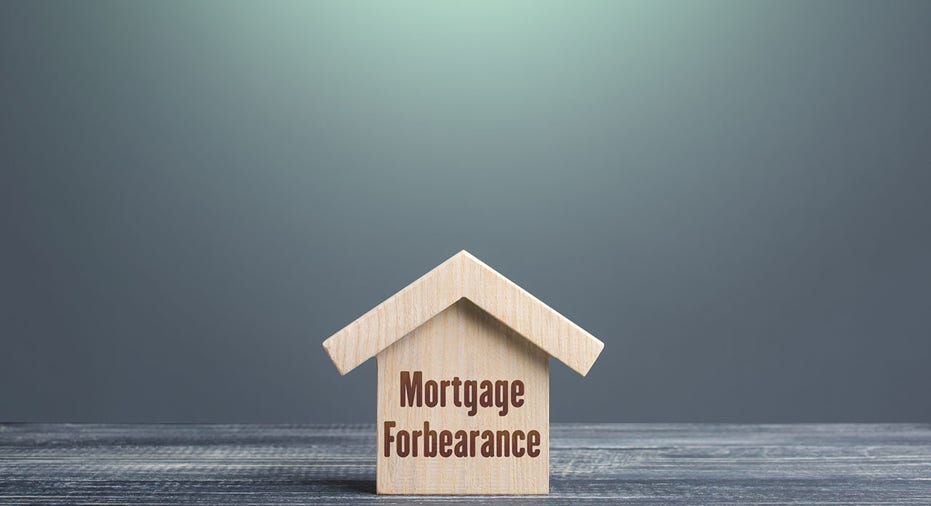US homeowners increasingly exiting mortgage forbearance, data shows

Homeowners are finding less of a need for mortgage forbearance, and many are exiting their payment deferral plans. (iStock)
The mortgage forbearance application period set by the federal government will end soon, and more homeowners than ever have started to once again pay their mortgages. After several extensions, the date of June 30, 2021 was set as what's believed to be the final deadline for payment deferral.
Last week, the number of mortgages in forbearance decreased by 7,000 homeowners from last week, and 117,000 mortgages or 5.4% from last month, according to the latest data provided by Black Knight, a mortgage data and technology company. This brought the number of households in active forbearance plans to 2.06 million, or 3.9% of all homes with a mortgage.
The Mortgage Bankers Association reported similar findings in its weekly survey, showing the number of home loans in forbearance dropped to 3.93% of a sevicer's portfolio volume, or about 2 million homeowners.
If you exited forbearance and want to find other ways to save on your monthly payments, check out Credible to compare multiple rates and lenders without affecting your credit score.
HOW TO PREPARE FOR THE END OF MORTGAGE PAYMENT FORBEARANCE
Economic improvement drives end of forbearances
The coming weeks could bring many more forbearance exits. About 400,000 more mortgages are up for their quarterly review over the next three weeks, which could lead to many more plan exits before the Fourth of July holiday. Black Knight experts explained that what happens in July will be a preview for what to expect later this year.
For many plans, the upcoming review will be the final quarterly review where homeowners have the option to exit forbearance or request an extension before hitting their final 18-month forbearance period.
Experts say an increase in forbearance exits is a sign of an improving economy.
"Although the headline employment growth number for May was lower than many had anticipated, other data show evidence of a strengthening job market," said Mike Fratantoni, MBA senior vice president and chief economist. "That is good news for homeowners who have been struggling and are looking for work, as more families can regain their incomes and start making their mortgage payments again."
If your mortgage loan is backed by HUD/FHA, USDA or VA, the deadline for requesting an initial payment deferral is June 30. However, if your loan is backed by Fannie Mae or Freddie Mac, there currently is no deadline for requesting an initial forbearance.
"Your initial forbearance plan will typically last three to six months," the Consumer Financial Protection Bureau (CFPB) explains in its blog. "If you need more time to recover financially, you can request an extension. For most loans, your forbearance can be extended up to 12 months. Some loans may be eligible for up to 18 months of forbearance, depending on when your initial forbearance started."
WHAT HAPPENS AFTER MORTGAGE FORBEARANCE ENDS? HERE'S WHAT YOU NEED TO KNOW
If you want to resume mortgage payments with lower interest rates, or simply want to see how much you could save each month, visit Credible to get prequalified for a mortgage refinance in minutes.
CAN YOU REFINANCE A MORTGAGE WHILE IN FORBEARANCE?
You've exited forbearance. So, now what?
There are several options for homeowners to resume making their mortgage payments or catch up on past-due amounts after exiting forbearance. Many may want to refinance their mortgage while interest rates are historically low to save money on their monthly payment. For loans backed by Fannie Mae and Freddie Mac, homeowners must make three consecutive on-time payments to qualify for a mortgage refinance.
Other options for homeowners after ending payment deferral vary by loan type, and also by borrower. For example, homeowners with FHA loans won’t have to make a lump sum payment for payments missed while in forbearance. Lenders must give them second liens that will be paid off when the borrower refinances or sells the home. VA loans could be eligible for loan modification plans, while USDA loans could get their payments added onto the end of the mortgage term.
Since refinance options vary from one loan to the next, and from one borrower type to another, it's valuable contact your mortgage lender about what your options are. Contact Credible to get in touch with a home loan expert and get your questions answered.
HOW TO REFINANCE A MORTGAGE AFTER FORBEARANCE ENDS
The bottom line
The latest statistics are encouraging, showing that homeowners are rapidly exiting their mortgage forbearance plans by choice as the job market improves. They aren't required to pay back their past-due amounts in a lump sum, and loan modifications are available for different mortgage types too, so homeowners are successfully avoiding foreclosure and eviction.
Later this year, the final extension periods will begin to expire for all homeowners. Previously, homeowners had to make at least 12 consecutive on-time home loan payments, but new rules created during the pandemic allow many to refinance their mortgage after just three monthly payments.
Visit Credible to see your personal mortgage rate and see how much you can save.
Have a finance-related question, but don't know who to ask? Email The Credible Money Expert at moneyexpert@credible.com and your question might be answered by Credible in our Money Expert column.